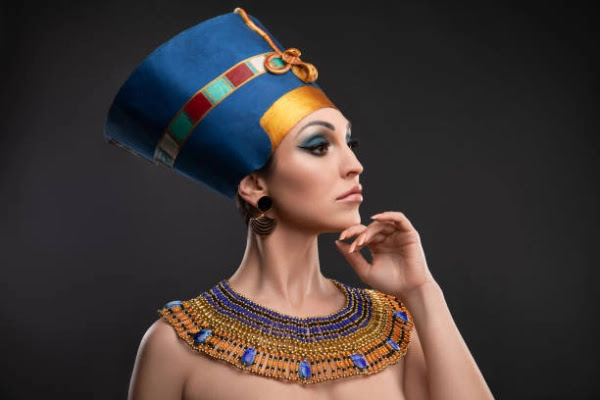Historical Journey through Civilizations
Ancient Origins of Lipstick
Introduction:
Lipstick, a ubiquitous cosmetic product in modern times, has
a rich and storied history that dates back thousands of years to ancient
civilizations. From ancient Mesopotamia to Egypt, Greece, and Rome, lipstick
has been used for various purposes, including religious rituals, social status,
and personal adornment. In this exploration, we delve into the fascinating
history of lipstick in ancient civilizations, tracing its evolution, symbolism,
and cultural significance.
Mesopotamia: The Birthplace of Lipstick
The origins of lipstick can be traced back to ancient
Mesopotamia, where both men and women adorned their lips with natural pigments
derived from minerals, plants, and insects. Archaeological evidence, including
artifacts such as cylindrical containers and ceramic pots containing red and
black pigments, suggests that lip coloring was a common practice among
Mesopotamian elites as early as 3500 BCE.
In Mesopotamian society, lip color was associated with
social status, wealth, and beauty. Men and women alike used lip coloring to
enhance their appearance and signify their membership in the elite class. Red
and black pigments, obtained from natural sources such as ochre, iron oxide,
and manganese dioxide, were applied to the lips using fingers or small brushes
made from plant fibers or animal hair.
Egypt: The Symbolism of Red Ochre
Ancient Egypt is renowned for its elaborate beauty rituals
and cosmetic practices, including the use of lipstick. Lip coloring held
significant cultural and religious symbolism in ancient Egyptian society, where
it was associated with fertility, protection, and divine beauty. The most
commonly used pigment for lip coloring in ancient Egypt was red ochre, a
natural clay mineral with a rich red hue.
Both men and women in ancient Egypt wore red ochre lipstick,
which was often mixed with other ingredients such as beeswax, animal fat, and
resin to create a smooth and durable formula. Lip coloring played a prominent
role in Egyptian religious ceremonies, where it was believed to ward off evil spirits
and ensure protection in the afterlife.
The iconic bust of Queen Nefertiti, renowned for her
striking beauty and regal appearance, depicts her with elegantly painted lips
adorned with red ochre lipstick. The widespread use of lip coloring among Egyptian
elites reflects its status as a symbol of beauty, power, and divine favor in
ancient Egyptian culture.
Greece: Lipstick as a Marker of Social Status
In ancient Greece, lipstick was not only a cosmetic
adornment but also a marker of social status and cultural identity. Both men
and women in ancient Greece used lip coloring made from natural ingredients
such as red ochre, carmine, and cinnabar to enhance their appearance and
signify their membership in the upper class.
Lip coloring was particularly popular among courtesans, who
used it to accentuate their lips and attract potential suitors. Greek poets and
philosophers, including Homer and Plato, made references to lip coloring in
their writings, highlighting its importance in ancient Greek society.
The use of lipstick in ancient Greece was not limited to
personal adornment; it also played a role in religious rituals and ceremonies.
Greek priestesses applied red pigment to their lips as part of their ceremonial
attire, symbolizing their connection to the divine and their role as mediators
between the mortal and immortal realms.
Rome: Lipstick and Luxury in the Roman Empire
In ancient Rome, lipstick became synonymous with luxury,
extravagance, and social refinement. Roman women used lip coloring made from ingredients
such as red ochre, vermilion, and carmine to achieve a vibrant and luscious lip
color that symbolized their status as members of the elite class.
The use of lipstick in ancient Rome was not limited to
women; men also applied lip coloring as a sign of wealth and sophistication.
Lip coloring was often combined with other cosmetic products such as face
powders, eye makeup, and perfumes to create a complete beauty regimen.
The popularity of lipstick in ancient Rome is evident in the
writings of Roman authors such as Pliny the Elder and Ovid, who documented the
use of cosmetics, including lip coloring, among Roman women. The widespread
availability of lip coloring products and the proliferation of beauty rituals
reflect the importance of appearance and self-presentation in Roman society.
Conclusion:
The history of lipstick in ancient civilizations offers a
fascinating glimpse into the cultural, social, and religious significance of
lip coloring practices. From the symbolic use of red ochre in ancient Mesopotamia
to the luxury and refinement of lipstick in ancient Rome, lipstick has played a
prominent role in shaping beauty ideals, social norms, and cultural identity
throughout history.
The ancient origins of lipstick provide insight into the
enduring appeal and universal significance of this iconic cosmetic product.
Today, lipstick continues to be a symbol of beauty, empowerment, and
self-expression, reflecting the timeless allure of lip coloring practices that
have spanned millennia.
